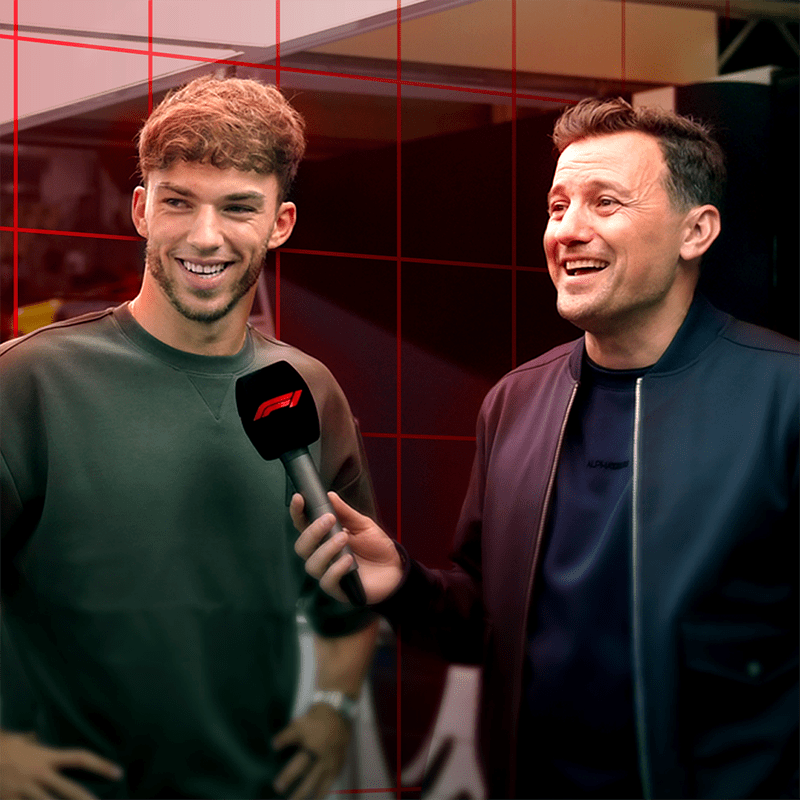Feature F1 Unlocked
STRATEGY GUIDE: What are the possible race strategies for the 2023 Italian Grand Prix?

After weather has played a part in the past eight race weekends, the drivers have finally been able to enjoy dry running throughout Friday and Saturday at Monza – although red flags have still limited the data that was gathered on long runs. So here are a few of the strategic options that are likely to be open to the teams on race day in Italy…
What’s the quickest strategy?
This weekend has seen the second trial of the ‘Alternative Tyre Allocation’ (ATA) which reduces the overall number of sets by two, and mandates drivers to use the hard compound in Q1, medium compound in Q2 and soft compound in Q3 during qualifying.
READ MORE: Sainz pips Verstappen and Leclerc to pole in ultra-close Italian GP qualifying
Having fewer sets is not a major issue at a venue like Monza though, as traditionally it’s been a one-stop race and looks set to be the same this weekend.
Track position is key on the low downforce circuit because it can be tough to overtake given the lower impact of the DRS (as all cars are already running skinny rear wings and so there is a much smaller gain in terms of top speed by opening the flap). That automatically lends itself to fewer pit stops, but add in the fact that the high speeds mean the pit stop loss is around 25 seconds and it has a major impact on race time, too.
Pirelli has brought the softest three compounds in its range to Monza and that means all of them offer decent pace, so the longevity of the medium and hard compounds are likely to be preferred for those starting at the front.
Starting on the medium means striking a balance between performance and endurance so that there’s good grip levels off the line, with a first stint of between 20 and 26 laps likely before switching to the hards to run to the end of the race.
.png.transform/9col/image.png)
How about a different option for the top 10?
To try and do something a little different compared to the other drivers at the front, another possible strategy is to start on the soft compound. There’s only an estimated 0.25s per lap difference in terms of race performance between the soft and the medium, but that small gain off the line could still be the difference between gaining a position and not.
The pace would need managing in the first stint though, with drivers aiming to get to Lap 14 or 15 – and ideally closer to Lap 20 – before fitting the hard to run to the end. This strategy would also mean the final stint could be challenging as the hards would be doing more than 50 laps, requiring some further management in the closing stages.
What are the options for the bottom half of the field?
As you might have guessed by now, the other realistic strategy that can be considered is also a one-stopper, starting on the hard compound. The hard is the C3 (last year’s medium tyre), so a softer option than was used here a year ago and therefore the pace is still solid in terms of performance.
While wear life is not a factor, thermal degradation is, and the downside is the hard doesn’t have the longevity that last year’s version of the same compound might have had, and starting on it will still likely limit how long the first stint can be.
.png.transform/9col/image.png)
The left rear tyre is likely to take the most punishment out of the low-speed corners – with traction particularly crucial – and once that drops off a car will become vulnerable to being overtaken, so the first stint would likely be between 30-35 laps.
Essentially splitting the race into two halves, the medium would be required for the second part as the soft does not have the durability to run for such a long stint (as the chart above shows).
Theoretically, a strategy of soft-medium-medium is the fastest two-stopper, but in reality the only way a two-stop race is likely to be seen is if there’s a well-timed Safety Car that opens up the possibility for a driver starting on softs and then running long on hards to make a later second stop for another set of softs.
Even so, it’s likely they’ll need to be very close to the pit entry at the time a Safety Car is called and with a big gap behind them, because even a stop under Safety Car conditions will cost another 12 to 13 seconds of race time. And if you’re Zhou Guanyu, Esteban Ocon or Pierre Gasly, this option isn’t available to you because each of that trio only has one set of soft tyres available.
.png.transform/9col/image.png)
Wait, but what’s the weather doing?
Remarkably, there is no rain in the air! You might not normally expect wet weather at the Italian Grand Prix, but this weekend’s completely dry running marks the first race without a single rain-hit session in four months. The last time every minute of every session took place on a dry track was in Miami back in May.
But the weather has been warm and stable throughout the race weekend so far at Monza and the forecast is for that to continue throughout the race. It’s actually expected to be the hottest day of the weekend so far with ambient temperatures creeping up towards 30C, but the potential for more cloud cover than on Friday and Saturday could mean track temperatures are a little lower.
That could have a major impact on strategy, with the low temperatures making the tyres easier to manage compared to if the sun is out throughout, with the latter meaning rear tyre temperatures in particular will need looking after out of the traction zones of the first and second chicanes.
So while it might not be a case of keeping eyes on the skies for rain this weekend, it’s still worth watching for cloud cover or bright sunshine as those conditions can make a clear difference to how the tyres react.
.png.transform/9col/image.png)




















